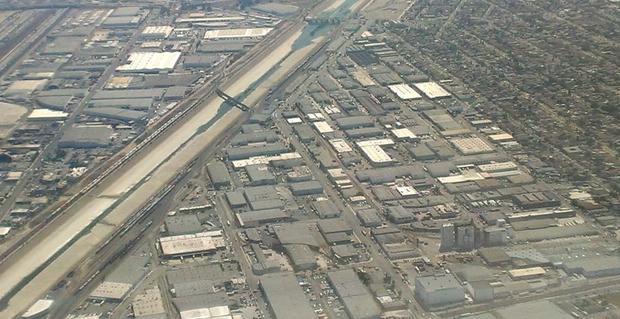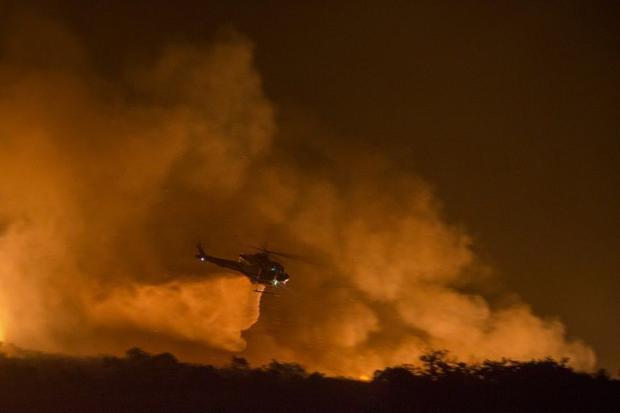The terrifying speed of the Camp, Woolsey and Hill fires has never been seen in the state’s history, leaving at least 11 people dead and dozens more still missing.
The Camp Fire in Northern California spread at over a football field a second or around 80 football fields per minute. It burned through 20,000 acres in less than 14 hours on Thursday, and by Friday, it had reached 90,000 acres. The Woolsey fire near Ventura in Southern California doubled in size in a matter of 90 minutes yesterday – quickly becoming a monster-sized 35,000 acres by Friday evening.
The Hill Fire, also in Ventura County managed to scorch 10,000 acres in a matter of six hours on Thursday. The Hill Fire is now about 25 percent contained. The Woolsey Fire is not contained while the Camp Fire is now 20 percent contained, according to Cal Fire.
Why have the fires been moving so quickly?
The Santa Ana winds are strong, extremely dry down-slope winds that originate inland and affect coastal Southern California and northern Baja California. They are typical in the fall of the year – however, they have been known to appear at other times. The winds bring some of the lowest humidity levels and combined with the warm, compressionally-heated air mass, plus high wind speeds, create critical fire weather conditions.
The Santa Ana winds have been rightly called “devil winds,” and are similar to Northern California’s “Diablo winds.” The diable winds are hot, dry offshore winds from the northeast that typically occurs in the San Francisco Bay Area of Northern California, during the spring and fall. With both winds, the Santa Ana and Diablo – as the air sinks, it heats up by compression and its relative humidity drops.
Basically, it sets up a weather pattern that is ripe for wildfires. These strange winds create a thermodynamic structure that results in a “hydraulic jump” that creates strong ridge-top and lee-side downslope winds. This is especially dangerous with respect to wildfires as it can enhance the updraft generated by the heat in such fires.
Other contributing factors make the wildfires dangerous
As the nation now knows, Trump tweeted about the fires early Saturday morning, blaming California’s “gross mismanagement of the forests” for the extent of the damages, and threatening to withhold federal funding if California does not “remedy” the situation, according to Vox.
The reality is that yes, humans are the cause of this devastation. But it is more, much more than forest management and environmental issues. Trump is wrong about who or what is to blame. Wildfires are getting worse because of human activity, but not because of California’s forest management.
Wildfires are normal, and serve a purpose in the cycle of forestation and the ecological balance of things. But the level of the devastation being seen today is actually our fault.
A study published in October in the Proceedings of the National Academies of Science found that 84 percent of wildfires are ignited by humans, whether through downed power lines, careless campfires, or arson.
Humans have been encroaching on nature since the beginning of our time here on Earth. We have built cities along river banks, and if this didn’t suit us, we changed the course of the river. We have built our homes in the middle of forests because we like the view, disregarding what we may have done to change the ecology of the area.
“When we get wildfires close to residential areas, that’s what makes them extraordinary events,” said Heath Hockenberry, the fire weather program manager at the National Weather Service. It’s also getting increasingly hard to keep people at a safe distance from the embers.
As Vox’s Umair Irfan wrote in September, “At almost every step, human activity has exacerbated the risks, the damages, and the harms from fires. These risks are continuing to mount, which means the future holds more dangerous, frequent, and costly blazes for vast swaths of the United States.”
And we must not forget that California’s population is continuing to grow. This is leading to a dangerous spill-over of residents moving into fire-prone areas. One study estimates that by 2050, 645,000 houses in California will be built in “very high” wildfire severity zones.
“We are definitely seeing [construction in fire-prone regions] happen more and more: 95 percent of the population of the state lives on 6 percent of the land,” Lynne Tolmachoff, a spokesperson for Cal Fire, told Vox last year.
Climate Change is a factor in the wildfire increase
Last, but certainly not the least of the factors contributing to the increase and intensity of wildfires is our changing climate. Global warming has changed weather patterns and increased the intensity of heat waves as well as extreme storm systems. Because of climate change, California’s forests will become more vulnerable to wildfires, according to California’s fourth climate change assessment, issued last August.
Not only will the average area burned by wildfires grow by 77 percent, but the frequency of “extreme wildfires,” those burning more than 25,000 acres, will increase by 50 percent under “business as usual” climate conditions, according to the assessment.
“Increases in wildfires and severe weather events in recent years are beginning to match what climate scientists previously predicted,” said Daniel Swain, a climate scientist at UCLA. “We have now, in California and elsewhere, reached the point where these changes are now detectable,” he said.

















